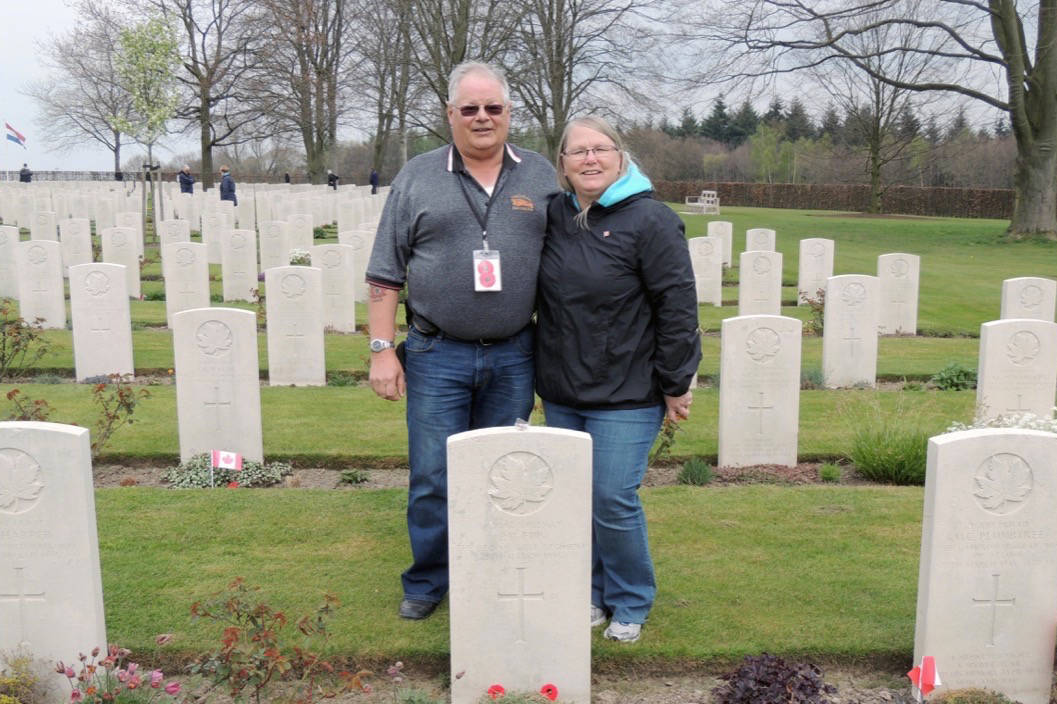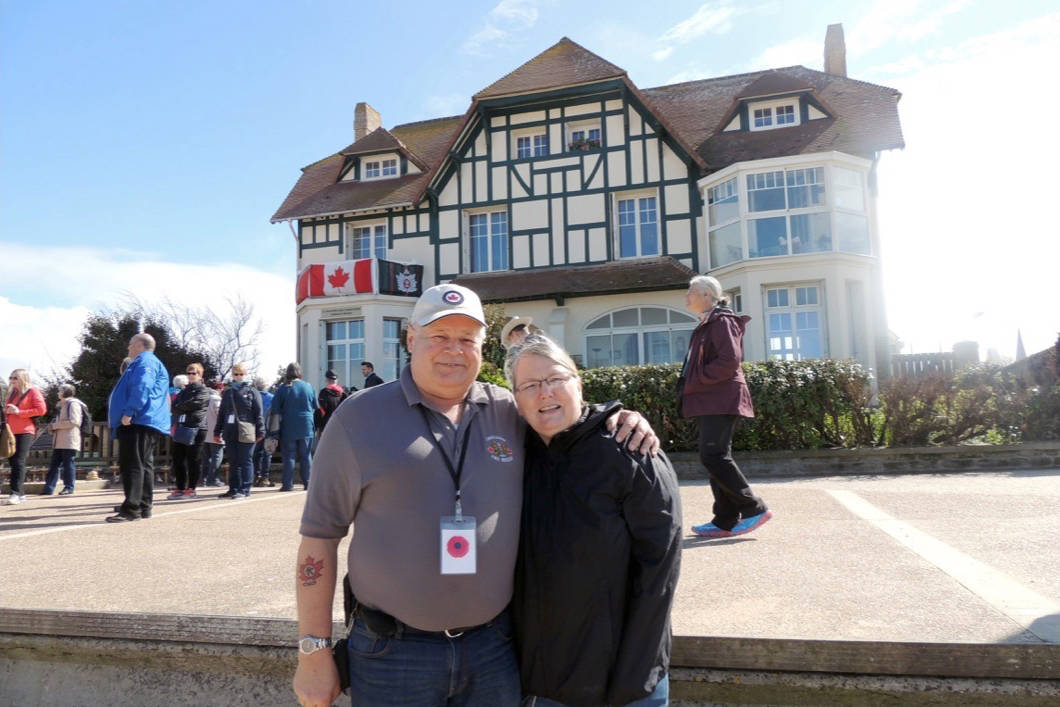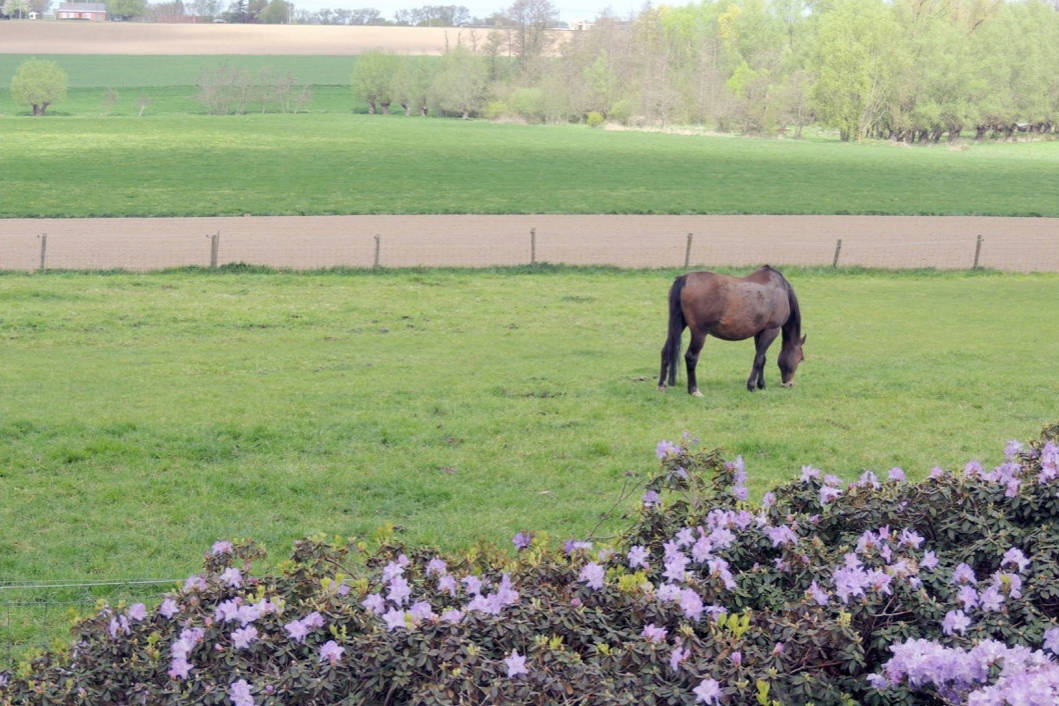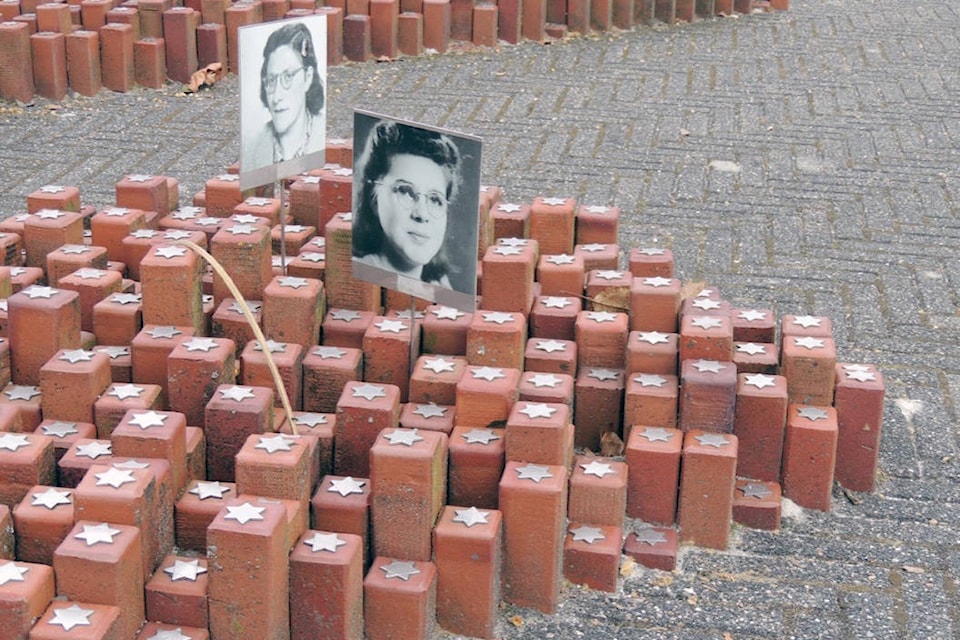One aspect of celebrating Canada’s 150th anniversary of Confederation is looking back on our history.
This is exactly what Castlegar’s newly retired fire chief and his wife Carolyn did recently when they took a 16-day journey through the battlefields of Europe where Canadians fought and died during the First and Second World Wars.
The Rempels had been planning the trip for two years in order to coincide with the 100th anniversary of the Battle of Vimy Ridge. The pilgrimage would take them from Paris to the beaches of Normandy, Passchendaele and on to the Netherlands.
Rempel said actually being on the ground and walking in the long-ago footsteps of those who were there during war time gives you a different perspective of things. At the beaches of the Battle of Dieppe where 907 Canadians were killed, 2,460 were wounded and 1,946 were taken prisoner, Rempel could see why the operation turned out the way it did.
“You could sure see how our guys just didn’t have much of a chance there,” he said. Many intact German bunkers still remain in the area. “You get a good look at what our guys were up against.”
As they wandered through the cramped, concrete dugouts that became a field hospital at Essex Farm, they could picture John McCrae tending the wounded and working on In Flanders Fields.
A visit to Westerbork Transit Camp — a refugee, detention and transit camp in the northeastern Netherlands — was especially poignant.
“It certainly opens your eyes a bit more to that part of the war,” said Rempel. “It was a huge operation, and how many people went through those camps is phenomenal. When you hear the stories of some of the individuals — it certainly puts a personal skin on things.”
The Rempels already had a personal take on the wars before they began their trip. During the Second World War, the Rempels had relatives fighting in every theatre of the war except Alaska, between the two wars, over 40 of their relatives served. They were able to visit the graves of some of those relatives during the trip.
“It is interesting to see where our folks went before us,” said Rempel. “I found this trip was as much about both of our families as it was about Canadian history.”
Carolyn’s uncle from Kimberley was buried at Bény-sur-Mer Canadian War Cemetery in France after he died in August of 1944. Gerry’s cousin from Rossland, David Funk, was also buried there after he died in July of the same year. One of Gerry’s great-uncles was wounded at Passchendaele and two other uncles died as prisoners of war.
Gerry’s Menonite cousin — a conscientious objector who still wanted to serve his country — enlisted as a medic but was killed just six weeks before the war ended. He is buried at Groesbeek Canadian War Cemetery in Netherlands.
Carolyn also had two uncles that were involved in the D-Day invasion, one has no grave because his ship sunk after a torpedo attack.
“There are a lot of ripple effects — everybody that was there was somebody’s son, dad, brother, or sister,” added Rempel somberly. “I can’t imagine the effects they felt at home here in both world wars.”
“When you go through France — it is pretty humbling, when you go through the countryside and you see all those cemeteries,” he said. “They are everywhere. All the Commonwealth graves have their large cross of sacrifice — you’ll see them in a community, you’ll see them in people’s backyards, you’ll see them way out in a farmers field isolated all by themselves.”
The impact of seeing things first-hand can not be underestimated.
“I have always read about how many Canadian dead there were — but when you actually feel the cemeteries — I can’t imagine what this country went through at the time, every community was effected,” explained Rempel.
On April 9, the Rempels joined 25,000 others including Prime Minister Justin Trudeau, Prince Charles, Prince William and Prince Harry at Vimy Ridge to commemorate the 100th anniversary of the famous battle. The memorial can be seen from nearly 10 miles away, its white marble shining in the sunlight — but Vimy itself is still filled with craters.
The bus the Rempels took to the memorial transversed the same route that the Canadians took up the ridge.
“It is pretty breath-taking actually, when you look out over the valley, you can see why it was so important — you can look and see for miles from that ridge,” described Rempel.
Remembering the sacrifices made by the soldiers and others is important to the Rempels.
“They have made our countries what they are today, and I am pretty grateful. They volunteered to get in there and deal with it,” said Rempel.
“You think about all the potential that could have been — the people that could have been here today. Who knows what those people could have contributed in other ways to society,” he reflected. “I certainly don’t glorify war — but I honour those who have served on our behalf and what they went through.”
As for a souvenir — Rempel brings home with him a piece of artillery shrapnel he found on Thiepval Ridge, where part of the Battle of Courcellette played out during the First World War — a concrete reminder of the journey taken, not just by him, but by the thousands of other Canadians who sacrificed so much on those same fields.



